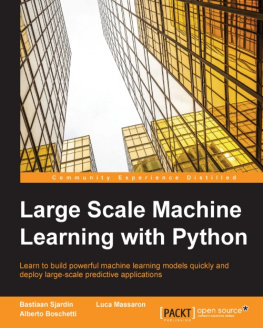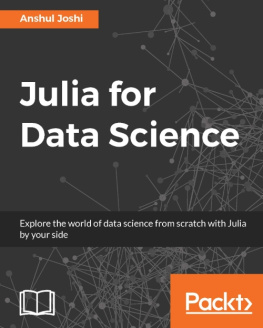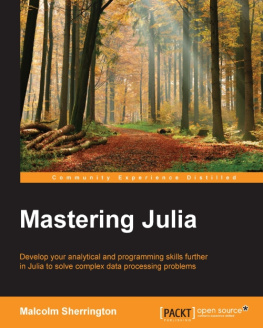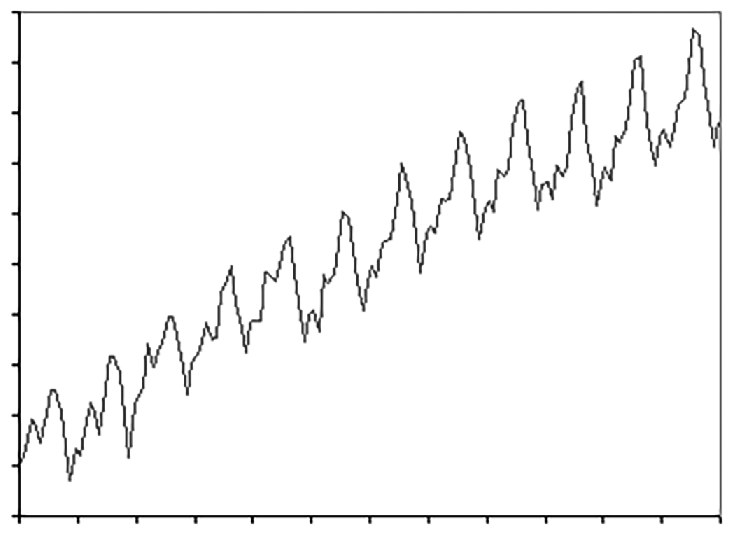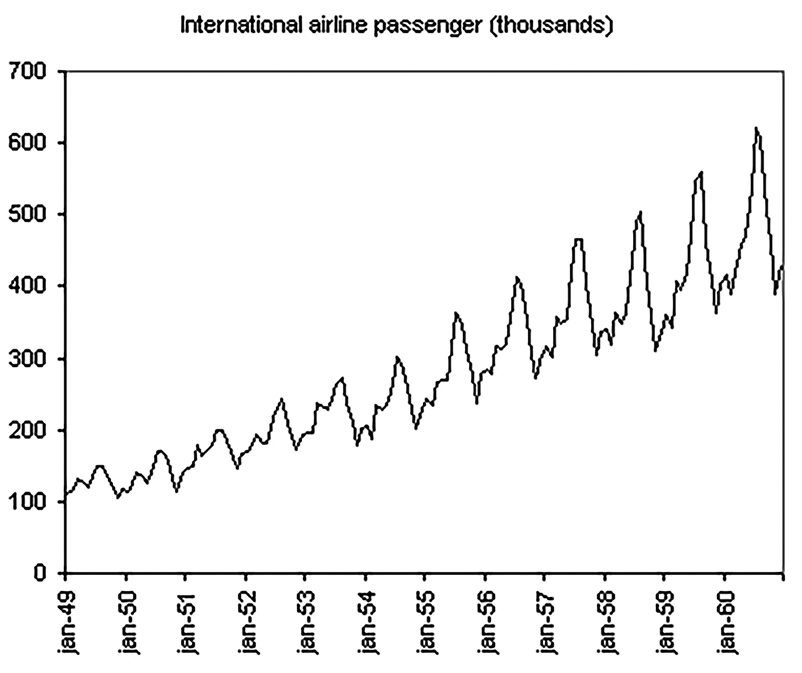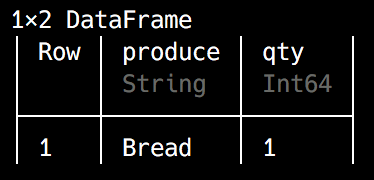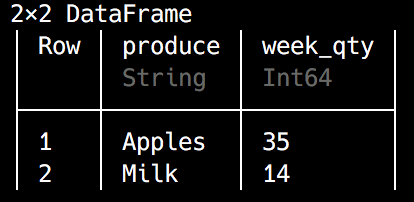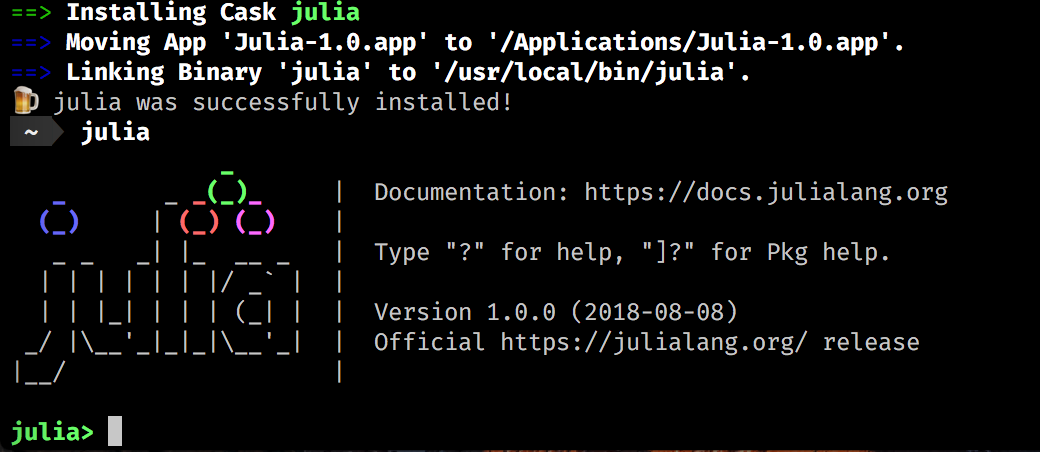Adrian Salceanu - Julia Programming Projects: Learn Julia 1.x by building apps for data analysis, visualization, machine learning, and the web
Here you can read online Adrian Salceanu - Julia Programming Projects: Learn Julia 1.x by building apps for data analysis, visualization, machine learning, and the web full text of the book (entire story) in english for free. Download pdf and epub, get meaning, cover and reviews about this ebook. year: 2018, publisher: Packt Publishing, genre: Home and family. Description of the work, (preface) as well as reviews are available. Best literature library LitArk.com created for fans of good reading and offers a wide selection of genres:
Romance novel
Science fiction
Adventure
Detective
Science
History
Home and family
Prose
Art
Politics
Computer
Non-fiction
Religion
Business
Children
Humor
Choose a favorite category and find really read worthwhile books. Enjoy immersion in the world of imagination, feel the emotions of the characters or learn something new for yourself, make an fascinating discovery.

- Book:Julia Programming Projects: Learn Julia 1.x by building apps for data analysis, visualization, machine learning, and the web
- Author:
- Publisher:Packt Publishing
- Genre:
- Year:2018
- Rating:5 / 5
- Favourites:Add to favourites
- Your mark:
Julia Programming Projects: Learn Julia 1.x by building apps for data analysis, visualization, machine learning, and the web: summary, description and annotation
We offer to read an annotation, description, summary or preface (depends on what the author of the book "Julia Programming Projects: Learn Julia 1.x by building apps for data analysis, visualization, machine learning, and the web" wrote himself). If you haven't found the necessary information about the book — write in the comments, we will try to find it.
A step-by-step guide that demonstrates how to build simple-to-advanced applications through examples in Julia Lang 1.x using modern tools
Key Features- Work with powerful open-source libraries for data wrangling, analysis, and visualization
- Develop full-featured, full-stack web applications
- Learn to perform supervised and unsupervised machine learning and time series analysis with Julia
Julia is a new programming language that offers a unique combination of performance and productivity. Its powerful features, friendly syntax, and speed are attracting a growing number of adopters from Python, R, and Matlab, effectively raising the bar for modern general and scientific computing.
After six years in the making, Julia has reached version 1.0. Now is the perfect time to learn it, due to its large-scale adoption across a wide range of domains, including fintech, biotech, education, and AI.
Beginning with an introduction to the language, Julia Programming Projects goes on to illustrate how to analyze the Iris dataset using DataFrames. You will explore functions and the type system, methods, and multiple dispatch while building a web scraper and a web app. Next, youll delve into machine learning, where youll build a books recommender system. You will also see how to apply unsupervised machine learning to perform clustering on the San Francisco business database. After metaprogramming, the final chapters will discuss dates and time, time series analysis, visualization, and forecasting.
Well close with package development, documenting, testing and benchmarking.
By the end of the book, you will have gained the practical knowledge to build real-world applications in Julia.
What you will learn- Leverage Julias strengths, its top packages, and main IDE options
- Analyze and manipulate datasets using Julia and DataFrames
- Write complex code while building real-life Julia applications
- Develop and run a web app using Julia and the HTTP package
- Build a recommender system using supervised machine learning
- Perform exploratory data analysis
- Apply unsupervised machine learning algorithms
- Perform time series data analysis, visualization, and forecasting
Data scientists, statisticians, business analysts, and developers who are interested in learning how to use Julia to crunch numbers, analyze data and build apps will find this book useful. A basic knowledge of programming is assumed.
Table of Contents- Getting started with Julia Programming
- Creating Our First Julia App
- Setting Up the Wiki Game
- Building the Wiki Game Web Crawler
- Adding a Web UI for the Wiki Game
- Implementing Recommender Sytems with Julia
- Machine Learning For Recommender Systems
- Leveraging Unsupervised Learning Techniques
- Working with Dates, Time, and Time Series
- Time Series Forecasting
- Creating Julia Packages
Adrian Salceanu: author's other books
Who wrote Julia Programming Projects: Learn Julia 1.x by building apps for data analysis, visualization, machine learning, and the web? Find out the surname, the name of the author of the book and a list of all author's works by series.


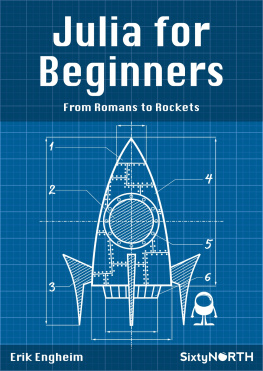
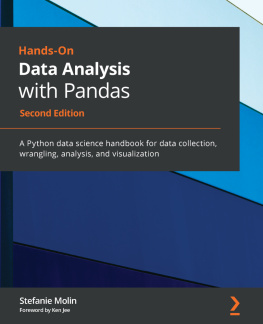

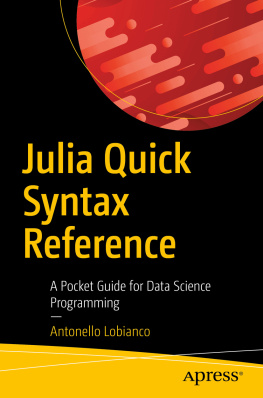
![Anshul Joshi [Anshul Joshi] - Julia for Data Science](/uploads/posts/book/119635/thumbs/anshul-joshi-anshul-joshi-julia-for-data-science.jpg)
![Zacharias Voulgaris PhD [Zacharias Voulgaris PhD] - Julia for Data Science](/uploads/posts/book/119586/thumbs/zacharias-voulgaris-phd-zacharias-voulgaris-phd.jpg)
